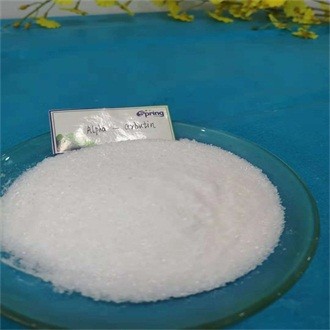α-arbutin and β-arbutin are two closely related chemical compounds that are often used in skincare products for their skin-lightening and brightening effects. While they share a similar core structure and mechanism of action, there are subtle differences between the two that can impact their effectiveness and potential side effects.
Structurally, both α-arbutin and β-arbutin are glycosides of hydroquinone, which means they have a glucose molecule attached to a hydroquinone molecule. This structural similarity allows both compounds to inhibit the enzyme tyrosinase, which is involved in melanin production. By inhibiting tyrosinase, these compounds can help reduce the production of melanin, leading to a lighter and more even skin tone.
The primary difference between α-arbutin and β-arbutin lies in the position of the glycosidic bond between the glucose and hydroquinone moieties:
α-arbutin: In α-arbutin, the glycosidic bond is attached at the alpha position of the hydroquinone ring. This positioning is believed to enhance the stability and solubility of α-arbutin, making it more effective for skin application. The glycosidic bond also reduces the potential for oxidation of the hydroquinone, which can lead to the formation of dark compounds that counteract the desired skin-lightening effect.
β-arbutin: In β-arbutin, the glycosidic bond is attached at the beta position of the hydroquinone ring. While β-arbutin is also effective in inhibiting tyrosinase, it may be less stable than α-arbutin and more prone to oxidation. This oxidation can result in the formation of brown compounds that are less desirable for skin lightening.
Due to its greater stability and solubility, α-arbutin is often considered the more effective and preferred form for skincare applications. It is believed to deliver better skin-lightening results and is less likely to cause discoloration or unwanted side effects.
When considering skincare products that contain arbutin, it's important to read the ingredient label to determine whether α-arbutin or β-arbutin is used. While both compounds can be effective, α-arbutin is generally regarded as the superior choice due to its enhanced stability and potency.
It's also crucial to note that individual skin sensitivities can vary. Some individuals may experience side effects such as skin irritation or redness when using products containing arbutin. As with any skincare ingredient, it's recommended to perform a patch test before applying the product to a larger area of skin and to consult with a dermatologist if you have any concerns about potential reactions.
In conclusion, both α-arbutin and β-arbutin are glycosides of hydroquinone used for their skin-lightening effects. However, α-arbutin's positioning of the glycosidic bond at the alpha position gives it greater stability and solubility, making it the more favored choice for skincare products aiming to reduce hyperpigmentation and achieve a more even skin tone.
Post time: Aug-30-2023


